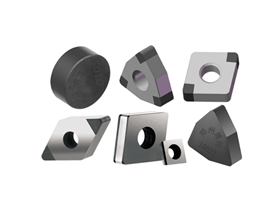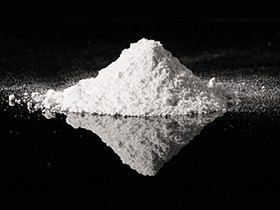Machining (including grinding) in the machinery manufacturing industry occupies a dominant position, the vast majority of mechanical parts of the final process need to rely on machining to complete. It can be seen that cutting processing is the foundation of mechanical manufacturing, and metal cutting theory is the core theory to guide cutting processing. According to estimates, the current cutting process in the machining workload is still as high as 90% or more. This means that, as long as the cutting process work, you must have an in-depth grasp of metal cutting theory and tool-related knowledge.
First, the workpiece material cutting processability and cutting conditions selection
Definition of the cutting processability and factors affecting
Workpiece materials in the cutting process is called the degree of difficulty of the material cutting processability. Material cutting difficulty, its cutting machinability is poor, and vice versa is easy.
Factors that determine the machinability of workpiece materials include the chemical composition of the material and the ratio, physical and mechanical properties and metallographic organization. Among them, the chemical composition and ratio determines other properties and performance after heat treatment, these factors affect the selection of cutting conditions and cutting parameters to determine the programming of the key issues to consider.
Cutting machinability classification and coping strategies
According to the performance of the workpiece material, cutting machinability can be divided into 12 levels of easy, easy, difficult and difficult. After understanding the material properties and cutting characteristics, to seize the main contradiction affecting the cutting processability, you can reasonably select the tool material, tool (insert) geometry parameters, cutting dosage, cutting fluid and tool (piece) groove type.
In order to ensure the machining accuracy and surface roughness value of the processed surface, but also according to the workpiece material cutting processing and cutting conditions, to determine the limits of tool wear or tool life, as well as the shape of the chip and discharge mode.
Second, the performance characteristics and application of cutting tool materials
Modern types of cutting tool materials
Modern cutting tool materials for cutting are rich and diverse, including high-speed steel (including high-performance high-speed steel and coated high-speed steel), cemented carbide (including new grades, coatings, steel junction and TiC-based cemented carbide), ceramics, PCBN and diamond (including natural diamond, PCD and CVD), totaling more than 100 grades.
Tool material properties and selection principles
Each grade of tool material has its own performance characteristics and scope of use, which is the programming and use of CNC machine tools must master the knowledge.
According to the workpiece material reasonable selection of cutting tool materials, in order to obtain the desired cutting effect, so that the tool in a reasonable amount of cutting under reasonable conditions of life, reduce downtime to change the auxiliary time. Should try to use cutting performance, high service life of the tool material, such as coated high-speed steel and carbide. In cutting non-ferrous metals, the use of PCD, CVD and diamond-coated carbide, its tool life can be dozens of times longer than the general tool to hundreds of times, the processing quality is easier to ensure.

Third, the selection of tool geometry parameters CNC machine tool features Modern CNC machine tools used by the tool is mostly the use of indexable inserts of the clamping type tool, its geometric parameters by the blade geometry parameters and the blade mounting groove on the shank of the relevant parameters combined. Geometric parameter selection considerations Different materials for different purposes of the blade, its shape, chipbreaking groove type, front angle, rear angle, tip angle, tip arc radius and so on are different. When selecting, factors such as workpiece material, workpiece structure and shape, machining stage (roughing and finishing) and chip removal should be taken into consideration. The selection of these parameters needs to be based on cutting theory and experience to ensure that the cutting achieves the desired results.
Fourth, the cutting process of physical and mechanical phenomena and cutting dosage, tool geometry parameters selection Cutting process of physical and mechanical phenomena In the cutting process, due to the friction between the tool and the workpiece, the chip and the tool and the elastic and plastic deformation of the cut material will produce cutting force and cutting heat; by the plasticity of the workpiece material and the effect of the cutting temperature, it may produce the accumulation of chip tumors; the cutting force and the cutting heat will also lead to tool wear; due to the different workpiece materials and tool materials will produce different forms of tool wear; different workpiece materials, the cutting surface and the machined surface cold and hard phenomenon is also different. Workpiece materials and tool materials are different, will produce different forms of tool wear; workpiece materials are different, the cutting surface and the machined surface of the cold hardening phenomenon in the cutting process is also different. Impact on the choice of cutting amount and tool geometry parameters These physical and mechanical phenomena require a reasonable choice of tool geometry parameters, and at the same time, it directly affects the choice of cutting amount. When using CNC machine tools for cutting and processing, follow the cutting specifications of ordinary cutting machine tools. Selection of cutting speed Vc, to understand the relative cutting and processing of the workpiece material, the relative cutting and processing of different materials varies greatly, resulting in the same tool life under the cutting speed difference of several times to dozens of times. The heat resistance of different tool materials is different, in the same workpiece material, the cutting speed used is also different. Cutting processability of the workpiece material and heat-resistant tool materials, cutting speed Vc is high, and vice versa is low.




